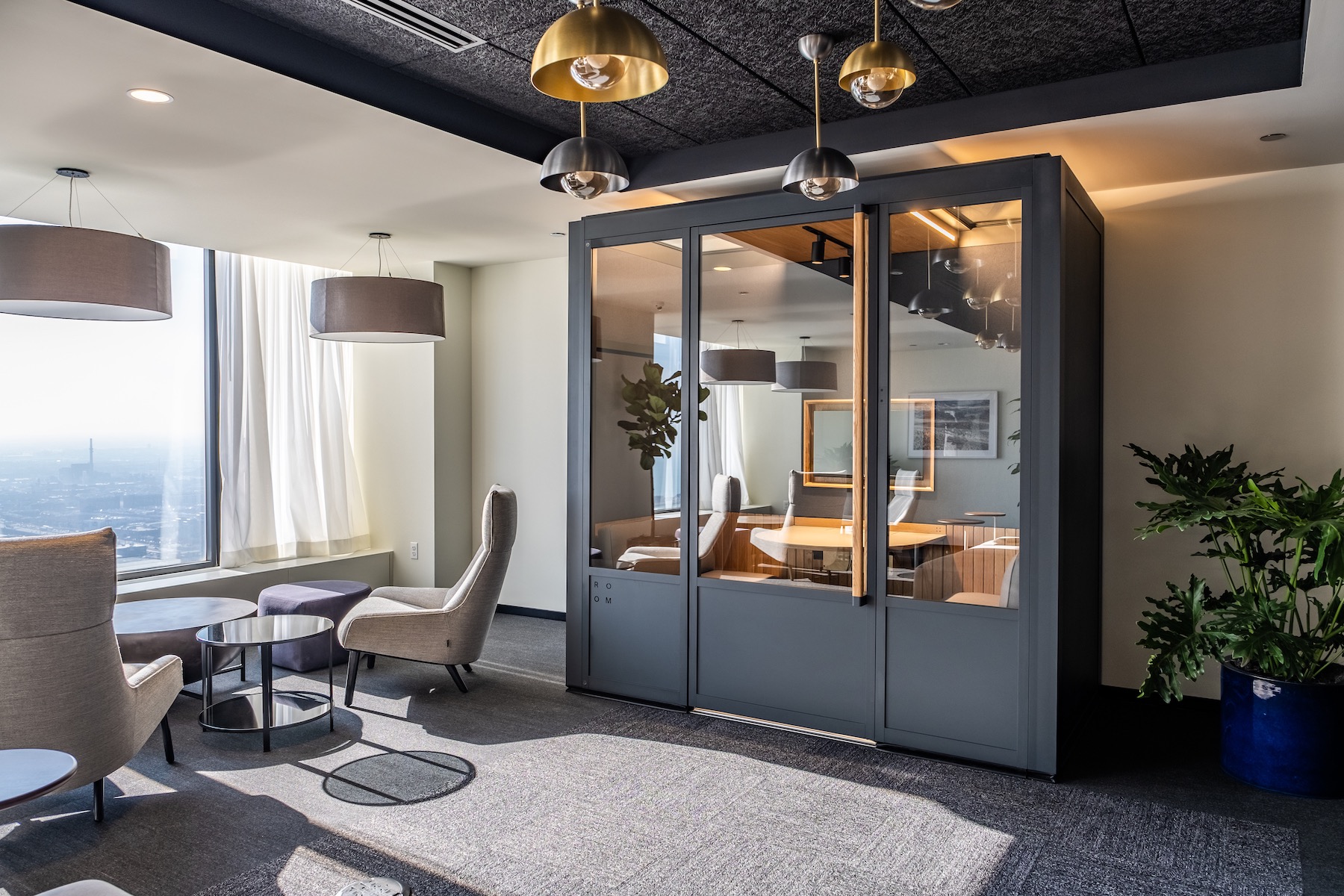No matter how much thought goes into designing an office, it’s impossible to predict how people will use it. That’s why ROOM’s new partnership with Industrious—a series of ROOM ‘Workspace Galleries’ within Industrious’ newest locations—is really about showcasing adaptability.
No crystal ball can show us how offices will function in the future, but there are plenty of predictions—and plenty of buzzwords. Hybrid. Distributed. Hub-and-spoke. Satellite. The main consensus among them? Versatility. Which is exactly what ROOM wants to demonstrate through its new series of ‘Workspace Galleries’ within leading workplace provider Industrious’ thoughtfully-designed private offices and suites. “The future of the workplace is centered around flexibility, and both ROOM and Industrious are motivated by that idea,” says Eivind Karlsen, Industrious’ VP of Product. “We both share a dedication to putting human needs and behaviors at the forefront of workplace culture and design, and our interactive gallery series demonstrates that.”
The reality about centering a workplace around human needs is that those needs can change. As the events of the past 10 months have so aptly shown, they can turn on a dime. And we can never know precisely how people will behave within any given space. So there’s a huge advantage in the ability to morph spaces to new uses in a short period of time, as well as the ability to react to behavior. As a category, ‘flex’ workspaces have never been more relevant than now, as companies begin planning their transition back to communal offices. “We are moving toward a much more hybrid reality in the workplace, but ‘hybrid’ means a million different things,” says Brian Chen, ROOM’s co-founder and CEO. “We need to think about workspace from the perspective of being much more adaptive than we ever have before. We need to humbly admit that we don’t know how the future will evolve, then design and plan for that.”
Adaptability and agility are the core of what ROOM’s portfolio of products seek to provide: Purpose-built modular workspaces with the flexibility to fit into any and all office layouts. By extension, the galleries serve as a design guide or inspirational model of how to create a flexible future workspace. ROOM and Industrious’ first collaborative gallery just launched in Chicago with the recent official opening of Industrious Willis Tower, a 52,000 square-foot coworking space on the 44th floor of the iconic skyscraper. Additional ROOM gallery spaces will launch later this year at Industrious Financial District in San Francisco, with others expected down the road. ROOM had previously partnered with Industrious Century City in Los Angeles, and both organizations have plans to reopen the space when local mandates are lifted.
The gallery at Industrious Willis Tower features ROOM’s soundproof Phone Booth and its new Meeting Room in the expansive coworking space, allowing Industrious members to book each for their private use. And on certain days, the gallery is also available to the public, by appointment, to experience the products first-hand and tour the coworking space. As neither ROOM nor Industrious hew to the idea of hosting traditional just-for-viewing showrooms, this collaboration provides a modern interpretation where the interactive spaces on display are utilized in real time.
The modular products in these galleries will also include Room Sense, ROOM’s proprietary analytics dashboard that provides real-time data about space utilization and density. For an individual Industrious member, Room Sense helps facilitate finding an available private office or conference room; for a manager, it offers the ability to understand exactly how and where their space is being used—empowering companies to make informed, data-backed decisions about their workplace needs. Industrious’ locations will serve as pilot venues for the smart software, with Room Sense officially launching later this year.
For companies all across the spectrum in industry and size, rediscovering exactly what their workplace needs are as the dust settles from the pandemic is certain to be a major undertaking in the near future. As Chen regularly muses, “What percentage of people want to go back to the office? Do they want to go back 5 days a week or 3 days a week? What does that mean in terms of how much square footage per employee?” For every company there will be a million different answers, he notes. What we’re witnessing is a seismic shift in thinking about the concept of the workplace that actually predates the pandemic—but has been thrust into sharper focus. But the implications are clear. “Adaptability means that you have the opportunity to improve your workplace and make adjustments in the near term to make it better,” says Chen. “So you need to have optionality, flexibility and adaptability as part of your plan from the very beginning.”


